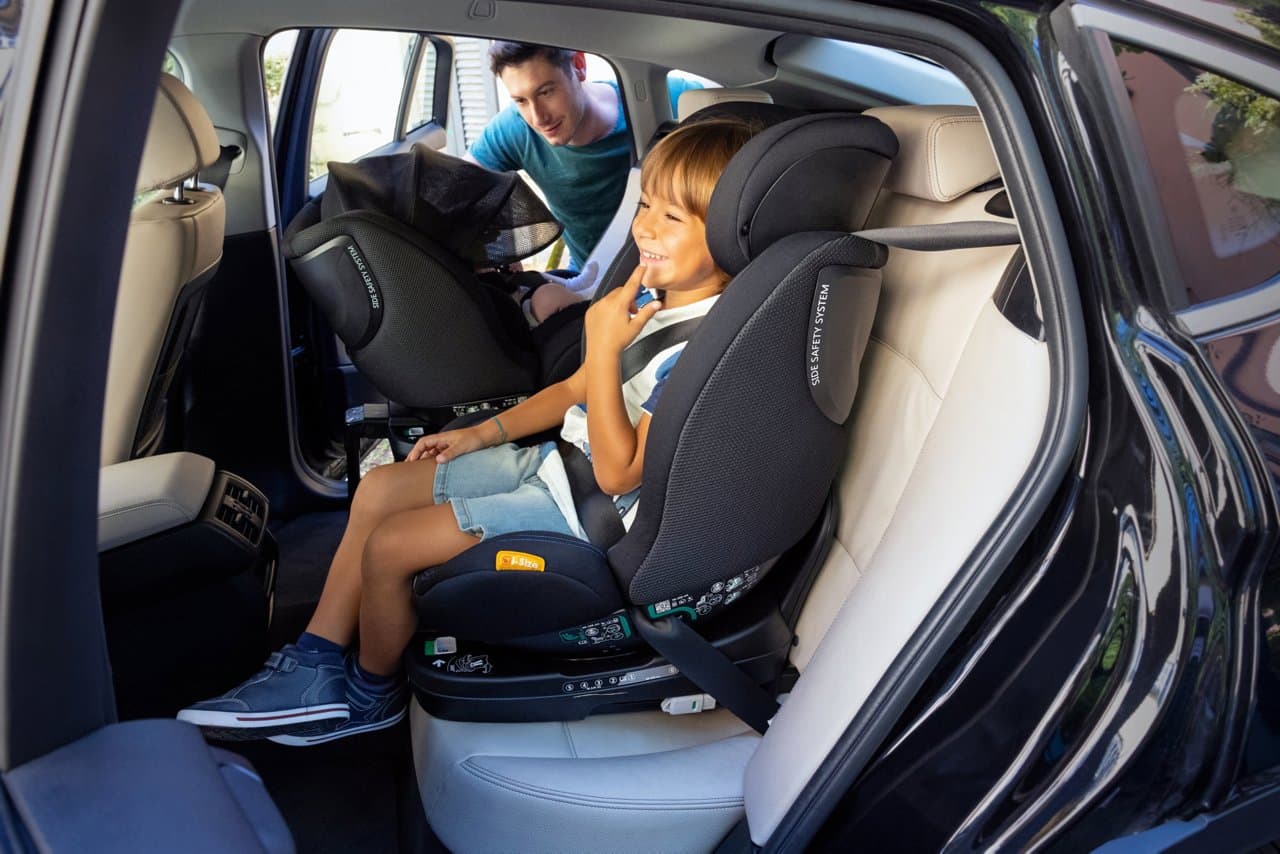Car Seat: How to Choose the Right One?

Mobiwisy offers you this guide to help you choose the right car seat for your child, suitable for their height and weight. This will ensure they are comfortable during your trips, and you will feel more at ease!
According to an analysis by Road Safety, a quarter of children under 10 killed on the road as passengers were not secured. Therefore, it becomes even more important to secure your child in the back (or in the front in case of absolute necessity) to give them the best chance of surviving a serious incident unharmed.
For this, Mobiwisy simplifies the Road Safety recommendations on this topic, and we help you put your child in safety every day!
Which seat for which weight or height?
Two standards apply to regulate manufacturers of child car seats. The first is the French standard R44 which distinguishes the appropriate seat based on the child’s weight. The second is the European standard R129 (or “Isofix”) which distinguishes the appropriate seat based on the child’s height.
The European standard is gradually replacing the French standard. Indeed, the child’s height is a more accurate measure of the protections they need.
Here’s a summary of the appropriate restraint device groups for your children, based on their weight* or height**:
| Child’s weight (R44 standard) | Child’s height (R129 standard) | |
| Group 0 | Birth to 10 kg | Up to 70 cm |
| Group 0+ | Birth to 13 kg | Up to 80 cm |
| Group 1 | 9 – 18 kg | Up to 1 m |
| Group 2 | 15 – 25 kg | Up to 1.50 m |
| Group 3 | 22 – 36 kg | Up to 1.50 m |
Attention, on the front passenger seat, your child must be placed facing backward and with the airbag deactivated.
Recommendations before purchasing a car seat
The Road Safety recommends the following measures before buying your car seat:
- Don’t rush into the first promotion you see;
- Review the vehicle manufacturer’s recommendations in the user manual. Since 2011, all vehicles are equipped with standardized Isofix attachment devices. They facilitate the installation of child seats and offer greater safety;
- Take the time to study the operation of the products offered in-store;
- Compare and have your child try the seat to test their comfort;
- After purchasing, take the time to install it carefully following the manufacturer’s instructions.
Road Safety recommends carefully checking if the certification label indicating that these devices meet European Union standards is present. This label proves that the manufacturer has obtained this approval and contains several details: - According to the standard, the weight (R44) or height (R129) indicates the appropriate device. - The letter E, encircled, means the equipment complies with European standards. The number following this mark indicates the country that issued the approval (2 for France).
Mobiwisy’s editorial team reminds you that failure to wear a seatbelt can result in a fine of 135 euros per unbelted passenger, to be paid by the driver (if minors) or by yourself. A leaflet available on the Road Safety website summarizes all the information you’ll need. Have a safe trip and stay protected!
Also read: Gaya Cargo: our review of the family-friendly cargo bike
This page is translated from the original post "Siège auto : comment bien le choisir ?" in French.
We also suggestthese articles:
Also read





